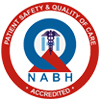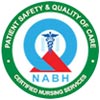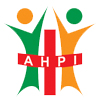
Types Of Pediatric Cardiology Test
November 01, 2023
There are a number of special tests pediatric cardiologists may do to learn more about your child's heart.Electrocardiogram
An electrocardiogram (ECG or EKG) is a quick test using stickers on the chest, arms, and legs to measure the electrical activity of the heart. This test is useful for the detection of heart rhythm abnormalities as well as enlargement of the heart chambersEchocardiogram
An echocardiogram is an ultrasound movie of the inside the heart―like the ultrasounds done during pregnancy. Images are obtained by placing an ultrasound probe on the chest, the belly, and the neck to see the heart from every angle. A first-time echocardiogram can be lengthy, so be prepared for it to take up to 30-60 minutes. Fortunately, echocardiograms can detect most congenital heart defects or problems of the heart muscle function.Ambulatory Heart Monitors
Holter Monitor
A Holter monitor is a small machine that records your child's heartbeat for a 24-hour to 48-hour period at home. There are 3 to 6 stickers placed on the chest that connect to wires and a small device that can fit in your pocket. If your child has symptoms, such as chest pain or palpitations, your child (or you) can press a button on the device so that your cardiologist can pay extra attention to the heartbeats at the time of the symptoms.Event Monitor
While similar to the Holter monitor, the Event monitor is different in that it can be worn for one month at home. Just like the Holter monitor, there are up to six stickers placed on the chest. This device records the heartbeats whenever your child has symptoms and presses the button. This test is useful if your child's symptoms occur less frequently, such as a few times a month.Ambulatory Blood Pressure Monitor
An ambulatory blood pressure monitor is a type of blood pressure cuff that can be worn at home for 24 hours to measure blood pressure multiple times a day. Every blood pressure is recorded and is shown to your child's cardiologist when the monitor is returned. This information is helpful to differentiate between a nervous child who has a high blood pressure in the doctor's office versus a child who truly has high blood pressure.Further Imaging Studies
Chest X-rays
The chest X-ray gives the pediatric cardiologist information about your child's lungs and the heart's size and shape. The amount of radiation from a chest X-ray is extremely small and doesn't cause any long-term side effects.Cardiac MRI
MRI is another way to take pictures of the heart and measure function. It also avoids radiation and uses a painless, giant magnet to take high-resolution pictures of the heart in motion over about 30-60 minutes.- Children under age 6 often need anesthesia to lay still for up to 1 hour.
- Older children and young adults can typically do the 1-hour test without anesthesia, as they can take a nap or watch a movie while in the scanner.
- Babies in the first couple months of life can do a "feed and wrap" test where they avoid needing anesthesia by falling asleep after being fed and wrapped in a blanket.
- Patients who have metal in their body, such as dental braces, may not be able to do this test due to the magnet.
Cardiac CT
A cardiac CT (also known as a CAT scan) is a fast, painless imaging study that uses radiation to get detailed pictures of the anatomy of the heart and the surrounding blood vessels. Some CT scans might require contrast or dye given through an IV to so the chambers of the heart and the blood vessels light up. Your child will need to lie very still for a few minutes at a time over a 30-minute period, and younger patients sometimes need to be lightly sedated.Transesophageal Echocardiogram (TEE)
A TEE is a heart scan with an endoscopy and provides a computerized picture of the heart in action. A small wand is placed inside the esophagus (food pipe) to get a closer look at the heart. This test is usually done before and after open heart surgery, or if certain structures were not seen well on a traditional echocardiogram. Children receive some type of sedation for this test and are not able to eat or drink for up to 8 hours prior the study.Stress Testing
Exercise Stress Testing
The exercise stress test involves uses a treadmill or bicycle while being connected to an ECG monitor. The level of difficulty increases every few minutes, and the test stop whenever you get tired. A pediatric cardiologist may recommend this test for schoolage children or young adults if they have chest pain, trouble breathing, or fainting with exercise.Stress Echocardiogram
An echocardiogram compares the function of the heart at rest versus under stress. It is done immediately after exercising on a treadmill or bicycle. If a child is are unable to exercise, a medication such as dobutamine can be used to create the same effect on the heart as exercise.Interventional Cardiac Procedures
Cardiac Catheterization
A catheter or wire is inserted in the blood vessel(s) of the groin and/or neck to reach the heart. This way, the blood pressure and oxygen level of each chamber of the heart can be measured directly and your child's cardiologist can make decisions about the next best steps in care. It is also possible to do interventions during the catheterization. For example, if a heart valve or a blood vessel is too small, a balloon can be inflated, or a stent can be placed to make that structure bigger. In order to take pictures of the heart during the procedure, contrast or dye may be injected and then a video of your child's heart in action is taken using a type of x-ray radiation called fluoroscopy. After the catheterization, the small catheter tubes and IV line are removed and a bandage is placed over the area. This procedure may require your child to stay overnight in the hospital for further monitoring.Electrophysiology Study
For children with arrhythmias or abnormal heart rhythms, an electrophysiology (EP) study can be used to find the area within the heart that is sending the abnormal signals. This test is performed by a pediatric electrophysiologist, a pediatric cardiologist with special training in the electrical conduction system of the heart in children. The EP study is done during a heart catheterization and usually with general anesthesia or sedation. Catheters are inserted into the blood vessel(s) of the groin and/or neck to reach the heart to create an electrical map of the heart. Once the location of the abnormal signal is found, the pediatric electrophysiologist can either burn or freeze the trouble area to get rid of the arrhythmia altogether. An EP study can take from 4 to 6 hours to complete, and your child will may need to stay overnight in the hospital.Recent Blogs
- Signs You Need to See a Doctor for Kidney Pain
- What Is A Nuclear Radiologist
- GUIDE TO NUCLEAR MEDICINE IMAGING
- Nuclear Medicine In Oncology
- Advancements In Nuclear Medicine Technology
- The Role Of Radiotracers In Nuclear Medicine
- An Introduction To Nuclear Medicine
- Cardiac Catheterization: When Is It Required?
- Types Of Pediatric Cardiology Test
- Tips For Preventing Heart Problems In Kids
- Advances In The Diagnosis Of Congenital Heart Disease In Children
- Signs Of Heart Problems In Children
- What Is A Pediatric Cardiologist?
- Understanding Congenital Heart Defects In Children
- Pediatric Cardiac Surgery: Types And Considerations
2023
- December (6)
- November (8)
- Cardiac Catheterization: When Is It Required?
- Types Of Pediatric Cardiology Test
- Tips For Preventing Heart Problems In Kids
- Advances In The Diagnosis Of Congenital Heart Disease In Children
- Signs Of Heart Problems In Children
- What Is A Pediatric Cardiologist?
- Understanding Congenital Heart Defects In Children
- Pediatric Cardiac Surgery: Types And Considerations
- September (7)
- Lifestyle Changes To Prevent Diabetes
- New Innovative Advances In Diabetes Treatment
- The Link Between Obesity And Diabetes
- Monitoring Blood Sugar At Home
- The Importance Of Regular Diabetes Check-ups
- Understanding Diabetes: Types, Causes, Symptoms & Treatment
- Lower Blood Sugar Naturally: Managing Blood Sugar Through Diet
- August (8)
- What’s The Difference Between A Neurologist And Neurosurgeon?
- Dementia: Causes, Symptoms, Diagnosis And Treatment
- Seizures: Causes, Symptoms, Diagnosis And Treatment
- Epilepsy: Causes, Symptoms, Diagnosis And Treatment
- Is Autism A Neurological Disorder? Causes, Symptoms & Diagnosis
- Pediatric Neurology: Neurological Disorders In Pediatrics
- What Are The Most Common Neurological Disorders?
- Types Of Neurosurgery: Overview, Procedure & Costs
- July (11)
- Types of Cardiac Stents
- Types of nuclear cardiology tests
- What Are the Different Types of Heart Surgery and Their Purposes?
- What is the difference between Cardiologist and Cardiothoracic Surgeon?
- What is the difference between Invasive, Non Invasive and Interventional Cardiology?
- What are the different Cardiology Subspecialties?
- What Are The Do’s And Don’ts For The Embryo Transfer Process?
- 5 Myths Over IVF
- Superfoods That Can Boost Your Chances of IVF Success
- What Is Male Infertility? Treatments For Male Infertility
- Causes of Male and Female Infertility
- April (4)
- March (1)
-

Share with us
Click Here -

Organ Transplantation
Click Here
Copyrights © 2024 PSG Hospitals. All Rights Reserved.








